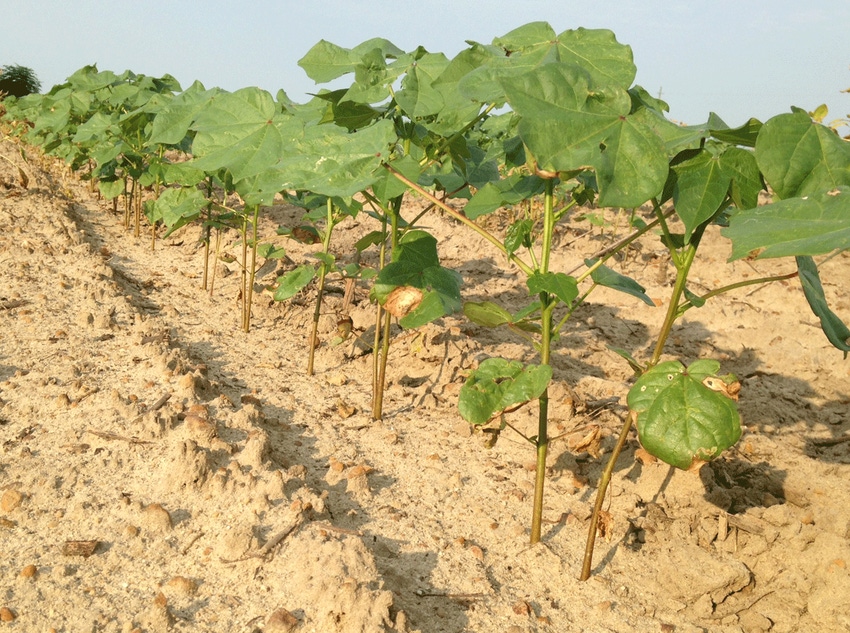June 24, 2014

Thrips control wound down in Alabama cotton last week and all else was pretty clear in fields, but this week cotton insect activity has picked up. Growers might need to take action to save first fruit.
According to a June 23 blog written by Ron Smith, Auburn University Extension entomologist, things have changed dramatically in Alabama cotton fields:
Not to say every field has insect problems. However, in some fields, consultants are finding some level of plant bugs, spider mites, aphids and a few stink bugs. Generally, the older the cotton, the greater the chance some combination of these pests are present.
Some have observed adult plant bugs feeding in terminals of pre-square cotton. Others report that plant bugs have dropped square retention to below 80 percent in cotton that will bloom within 7-10 days. A few stink bugs can already be found in these older fields. As we know from previous experience, stink bugs will attack bolls just after the dried bloom drops off if there are no larger bolls to feed on.
Added to these bug problems are the presence of aphids and spider mites. Aphids can be found clustering in the terminals of some plants in fields of older cotton. This is typically the way an economic aphid infestation usually begins. Spider mites have been treated in some fields already. Good results were obtained with Abamectin at 10 oz. per acre. Mites are still on borders of other fields and do not appear to be spreading yet.
Save fruit first
With the combinations of pests present, it is difficult to control multiple species without a tank mix combination. My advice to growers, agrifieldmen and consultants would be to narrow your pest spectrum to the two species that offer the most near-term damage potential and select a chemical or combination that will control those.
It is just too early for me to consider three-way tank mix combinations. At this time I believe it would be wise to target plant bugs (and stink bugs) first and I would place aphids second. These species can be controlled with a tank mix of two materials that would be rather inexpensive. A product that will give good control of plant bugs and stink bugs would be my first choice in the tank. If this product does not control aphids, I would add one that did.
This would leave the mite issue unaddressed. I just feel that we need to protect fruit first and deal with stress from spider mites in the weeks ahead.
About the Author(s)
You May Also Like






